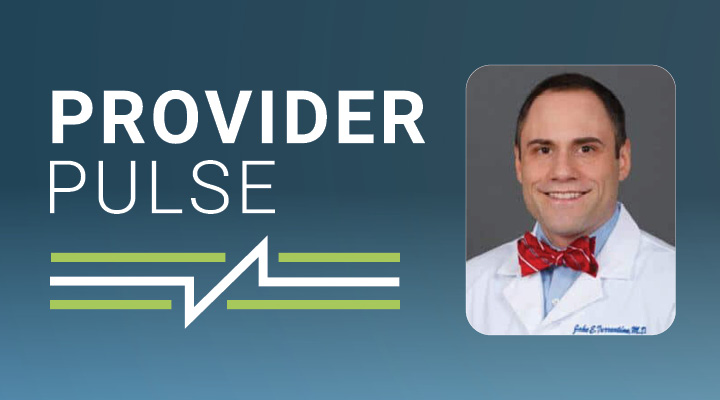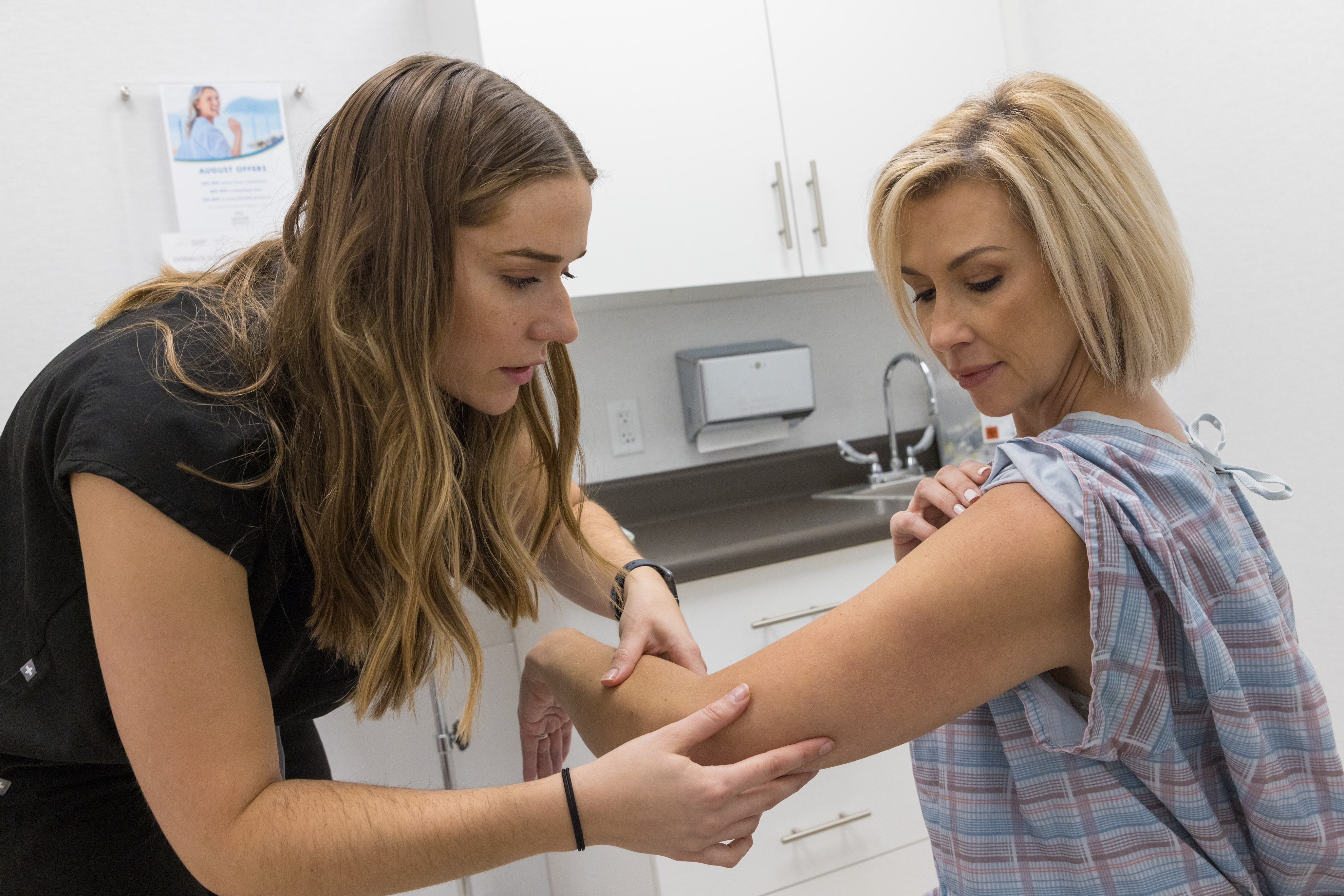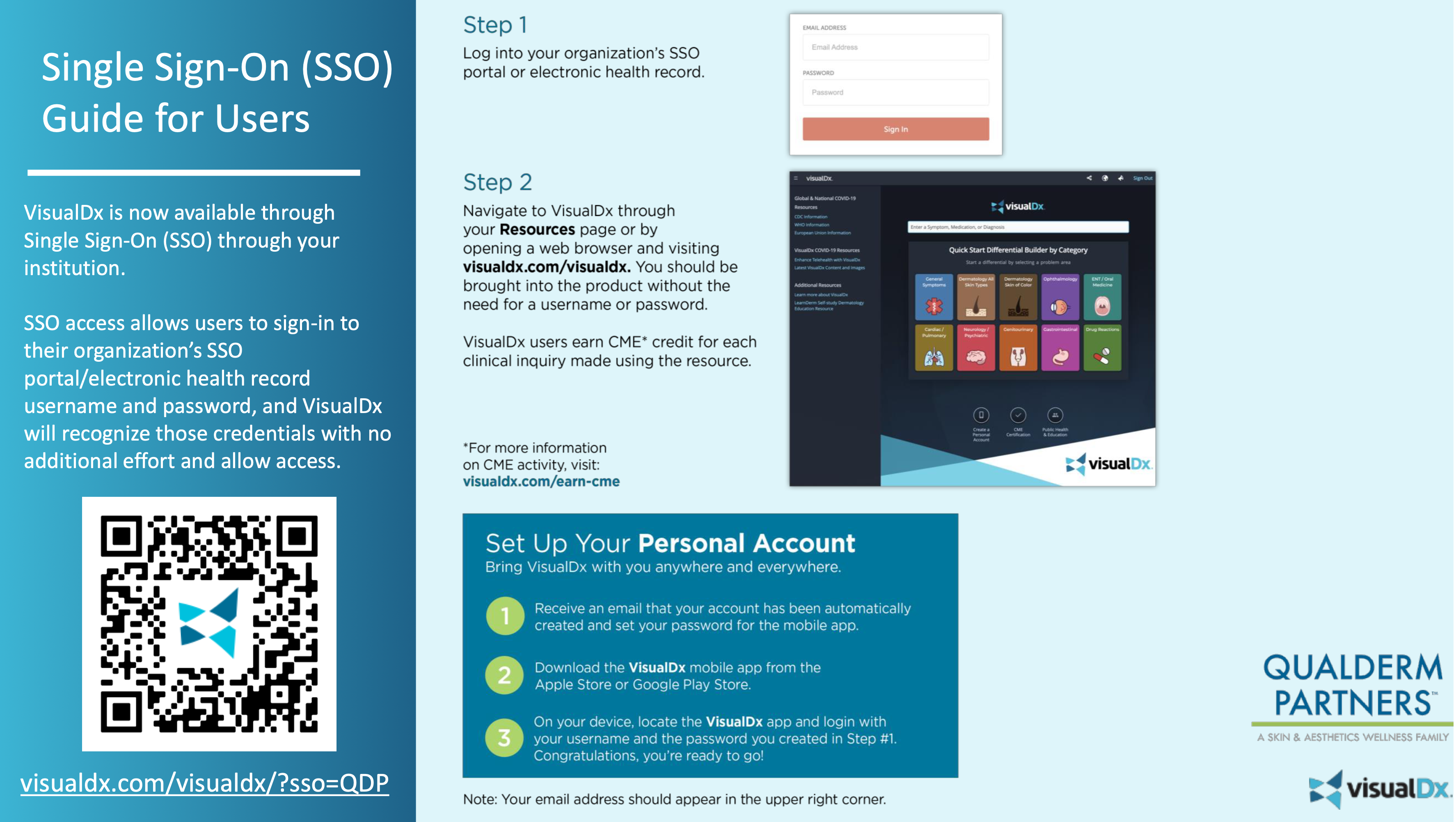Provider Pulse - November 2025
 Dear Colleagues:
Dear Colleagues: Heading into November, our month of Thanksgiving, the season naturally draws us toward gratitude. I’m grateful to all of you for doing the work, solving problems, and caring for patients, even when it isn’t easy.
What I appreciate most isn’t a single accomplishment or metric. Every provider, medical assistant, front-desk team member, and support staff member contributes to our mission of healing and serving others. The steady consistency of that work is what allows the whole system to function, and it’s something I never take for granted.
As we enter the final stretch of the year, let’s finish strong and stay focused on the fundamentals: efficiency, accuracy, communication, and follow-through. Those aren’t operational buzzwords. They’re the foundation of excellent care and the reason our organization continues to earn its reputation for quality.
Take time this month to rest and recharge, but also take pride in the discipline and consistency that make our work matter. Gratitude isn’t a passive feeling; it’s the daily choice to keep doing the right things the right way.
Please always feel free to reach out (Jake.Turrentine@qualderm.com) with any questions or concerns.
Sincerely,Jake E. Turrentine, MD

Clinical Corner
Systemic Treatments for Atopic Dermatitis
As treatment options for moderate-to-severe atopic dermatitis continue to expand, it’s important for every provider to understand the core indications, risks, and benefits of systemic therapy, especially as we go into the winter season. (See summary table below.)
When to Consider Systemic Treatment: Patients who fail to achieve adequate control with optimized topical therapy and lifestyle measures, especially those with widespread disease, chronic sleep disruption, or significant quality-of-life impact, may benefit from systemic agents. The goal is to control inflammation, reduce itch, and prevent skin barrier breakdown.
Available Options:
Dupilumab / Tralokinumab / Lebrikizumab (IL-13 blockade + IL-4 blockade for Dupilumab only): High efficacy, favorable safety, and minimal monitoring. Watch for conjunctivitis and rare head-and-neck flares.
Nemolizumab (IL-31RA blockade): Effective, particularly for itch, with favorable safety profile and minimal monitoring. Rare side effects; the most common is headache.
JAK Inhibitors (Upadacitinib, Abrocitinib): Rapid onset and strong itch reduction. Require lab monitoring (lipids, CBC, LFTs) and carry black box warnings for thrombosis and infection risk.
Traditional Immunosuppressants (Cyclosporine, Methotrexate, Azathioprine, Mycophenolate): Useful in select cases or when biologics are not accessible. Require close lab monitoring and are best reserved for short-term bridging or refractory disease.
Balancing Risks and Benefits:
Modern biologics have transformed outcomes for many patients with minimal systemic risk compared to older immunosuppressants. Still, patient education, infection awareness, and ongoing follow-up remain critical. The most effective therapy is one that achieves sustained control with the fewest side effects and the greatest adherence.
In short, systemic therapy for AD should be individualized, evidence-based, and closely monitored. Understanding when to escalate, and which therapy fits best, helps ensure our patients receive relief without unnecessary risk.

Medication | FDA Indication/Age | Typical Dosing | Key Risks/Monitoring |
|---|---|---|---|
| Dupilumab (Dupixent) | Moderate to severe AD, ages 6 months+ | Adults: 600 mg SC load, then 300 mg q2w. Pediatrics: weight-based (look up on case-by-case basis) | Conjunctivitis, injection-site reactions; rare eosinophilia/head-and-neck dermatitis; rare psoriasis-like eruptions and RA-like arthritis. No routine labs. |
| Tralokinumab (Adbry) | Moderate–to–severe AD, ages 12+ | 600 mg SC load, then 300 mg q2w; may extend to q4w if stable. | Conjunctivitis, injection-site reactions; hypersensitivity. No routine labs. |
| Ebglyss (lebrikizumab) | Moderate–to–severe AD, ages 12+ and ≥40 kg | 500 mg SC at weeks 0 and 2, then 250 mg q2w until adequate response; maintenance 250 mg q4w. | Conjunctivitis, injection-site reactions; helminth infection caution; avoid live vaccines. No routine labs. |
| Nemluvio (nemolizumab) | Moderate–to–severe AD, ages 12+; use with TCS and/or TCI when not controlled on topicals | 60 mg SC loading (two 30 mg injections), then 30 mg q4w; if clear/almost clear at week 16, 30 mg q8w. | Hypersensitivity (incl. angioedema), headache, arthralgia, urticaria; avoid live vaccines. No routine labs. |
| Upadacitinib (Rinvoq) | Moderate–to–severe AD, ages 12+ | 15–30 mg PO daily (age/weight/severity dependent). | Boxed warnings: serious infections, malignancy, thrombosis, MACE; labs: CBC, LFTs, lipids; pregnancy avoidance. |
| Abrocitinib (Cibinqo) | Moderate–to–severe AD, ages 12+ | 100–200 mg PO daily (consider renal/hepatic adjustments). | Boxed warnings as above; labs: CBC, LFTs, lipids; dose adjustments for cytopenias; pregnancy avoidance. |
| Cyclosporine (off-label) | Severe refractory AD | 3–5 mg/kg/day PO, divided; taper when controlled. | Nephrotoxicity, HTN, lipids; monitor BP/creatinine; drug–drug interactions. Short-term/bridge use preferred. |
| Methotrexate (off-label) | Moderate–severe AD | 10–25 mg weekly PO/SQ + folic acid. | Hepatotoxicity, myelosuppression; CBC/LFTs; strict contraception; avoid excess alcohol. |
| Azathioprine (off-label) | Refractory AD | 1–3 mg/kg/day PO; adjust by TPMT level. | Myelosuppression, hepatotoxicity, infection risk; CBC/LFTs. |
| Mycophenolate (off-label) | Refractory AD, steroid-sparing | 1–1.5 g PO BID. | GI effects, leukopenia, teratogenicity CBC/renal/hepatic monitoring. |
Compliance Updates
MIPS
Overall, we are doing well on MIPS measures, but there is still room for continued improvement. Let’s close out the year strong. Please remind your teams to focus on these measures:
Measure | Comments |
|---|---|
47: Advance Care Plan | You only have to record “YES” or “NO” to get credit. It’s okay to call back patients where it was missed. |
| 226: Tobacco use screening & cessation intervention | You or your MA can go back and call patients where this was missed, counsel the patient and document it as a chart note, and then override the MIPS. |
| 394: Immunizations in Adolescents | For patients 13 (or turning 13 during 2025); biggest miss is just not recording the data. |
| 485: Improvement in Psoriasis Itch Severity | Record itch scores where applicable. |
| 486: Improvement in Dermatitis Itch Severity | Record itch scores where applicable. |
| 355: Unplanned reoperation within the 30 day post operative period and 357: Surgical site infection (SSI) | For Derm, only Soft Tissue Excision codes qualify. |
| 509: Melanoma Tracking / Recurrence | Record measure 509 when you see a patient for a skin check after excising their melanoma within the last 5 years. |
Compliance Updates
CLIA
If you are a lab director of a moderate to high complexity (non-PPM) lab, please make sure to document your second site visit by the end of the year. You should have already done your first one before Sept 1, and your second one should be at least 4 months later.
Here is our suggested template for documentation:
Provider Achievements
Call for Submissions
To help us celebrate accomplishments across our network, we’ve created a link where you can report your own or a colleague’s recent achievements. Please take a moment to share by filling out the form here:
Opportunities

VisualDx Access
All providers have paid access to VisualDx through QualDerm. This platform supports diagnosis and patient education. Whether you need help forming a differential diagnosis or you just want to share condition-specific information with a patient, this is an excellent resource. VisualDx even offers patient education materials in Spanish for most diagnoses! You may earn 0.5 hours of CME for each diagnosis searched. Make sure to claim your credit through the VisualDX app or website.

Grand Rounds Update
Our November Grand Rounds session has been canceled. Several providers expressed interest in sharing cases but will be unable to present this month. We will resume Grand Rounds in January 2026. Sheri Kimbro will remove the November session from everyone’s calendar. In the coming weeks, we’ll share the 2026 Grand Rounds schedule, which will feature an exciting new format that includes a mix of lectures and case presentations. Thank you to everyone who continues to support and participate in Grand Rounds. Your contributions make this series a valuable opportunity for collaboration, learning, and CME growth across the QualDerm network.
QualDerm Helping Hand
Please help support our Helping Hand program! QualDerm Helping Hand is a teammate assistance program established to help our employees help one another. All donations are tax-deductible, and the funds are used to help qualifying teammates via Helping Hand grants. For more information about the program, and for the payroll authorization program, please click the button below. Please also feel free to reach out to Casey Parker or Marcia Topiwala with any questions.
Other Announcements
QualDerm Advanced Therapeutics CME
On Saturday, February 7, 2026, we will host our QualDerm Advanced Therapeutics CME conference from 10:00 a.m. to 4:00 p.m. EST. Please mark your calendars. A link for registration will be available the next one to two months. If you are interested in being a speaker at the conference, or if you know someone you’d like to hear present, please let me know!
Gratitude is not only the greatest of virtues, but the parent of all the others. — Cicero

